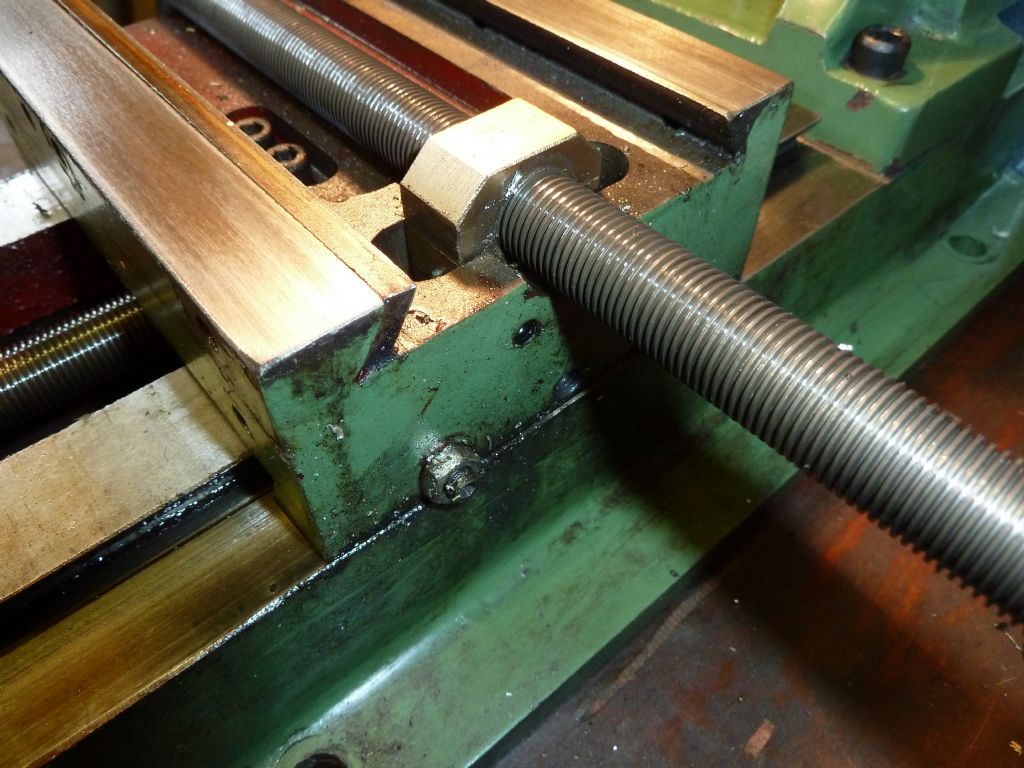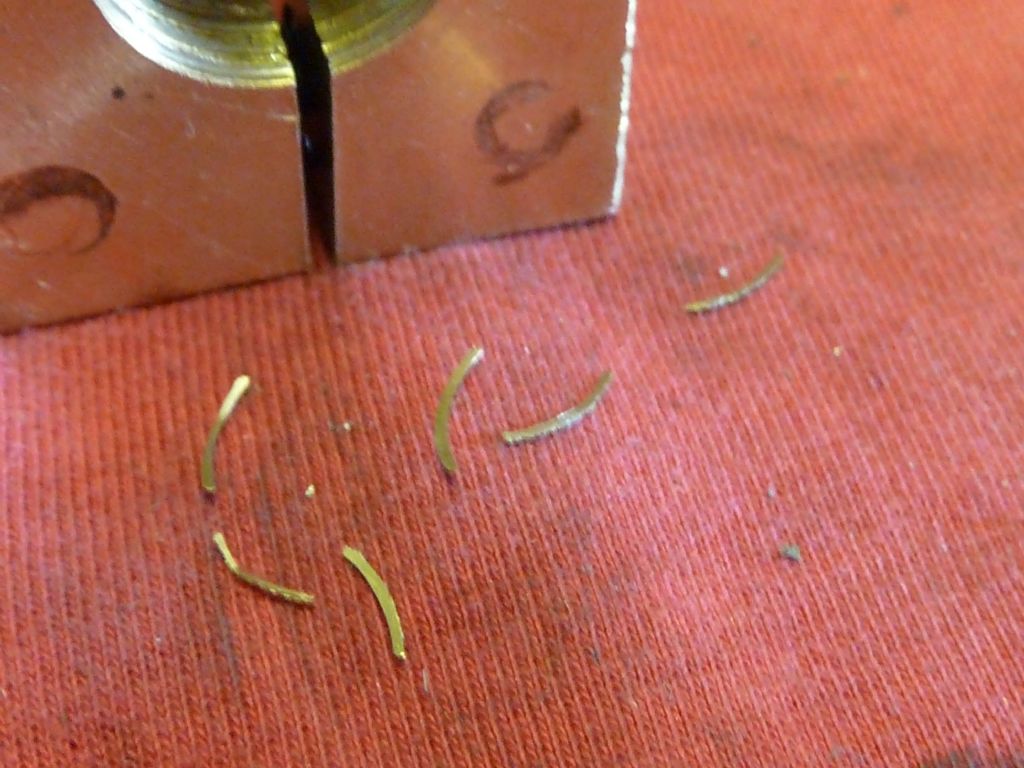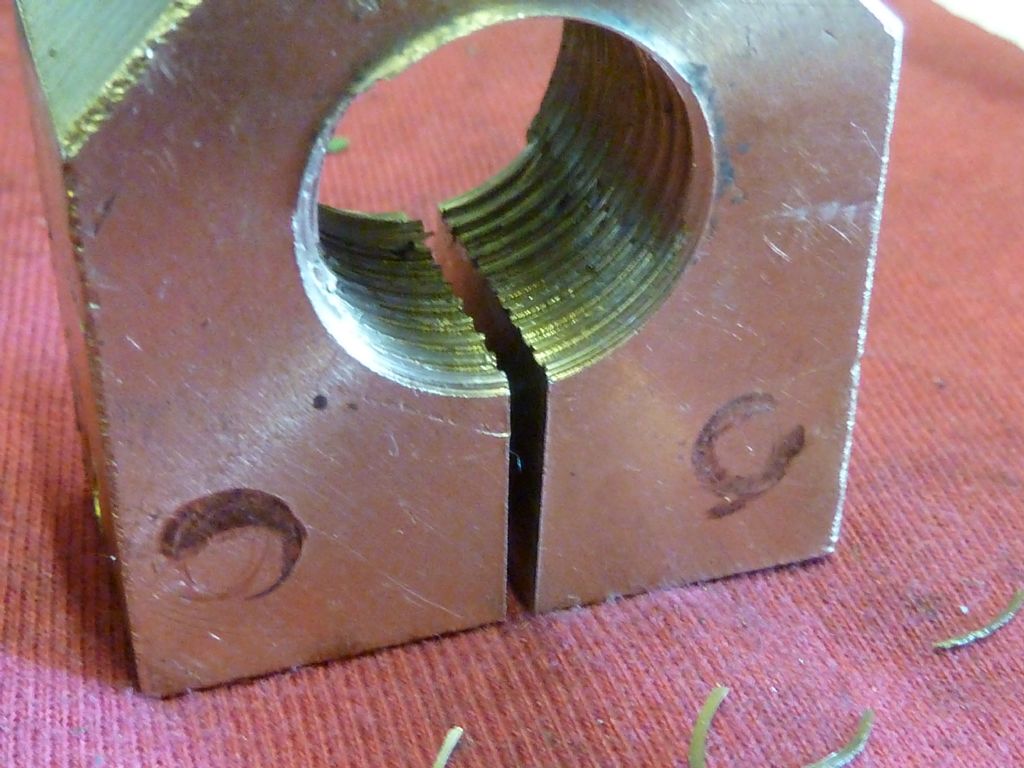Hello Gentle folk,
Its a long while since i have been on here, but here goes.
The above mill has been rather poor in terms of accuracy and rigidity for a long while. With the abundance of time recently I decided to SORT it out.
The column has been removed scraped fettled and forced into submission by various means and a stiffening bracket. I am now well pleased with it at 0.005mm difference across a 260 mm circle in the x axis and 0.03mm on the Y. That is better than half of the manufacturing spec.
My attention moved to the vagarities of the gib strip " tension" in both axis.
I have had a go at polishing them before but over time every thing got very slack and the backlash on the x axis was appalling at nearly a full turn ( 1.5mm )
So today i have pulled it all apart to sort it properly. That is where the real problem rose its ugly head. The X axis split nut sits in a little recess full of oil. Only in this case it looked to be in a bath of gold. Yes severe wear had taken place and the bottom half of the thread no longer had a form or crest there where just whisps of brass standing in that spot. ( the upper half of thread is pretty decent which is why the machine still worked.
I will ring WARCO tomorrow about a spare but their performance on previous enquiries for parts for this machine are abysmal so i do not hold out much hope.
The old ARC x2 spares may do the job but look different in shape and are not split. They may be a possibility though.
The lead screw is a metric 1.5mm pitch, 16mm OD
The likeyhood is though that i will have to MAKE a replacement. This eventualy leads on to the questions.
1) Will the thread form be ACME 29 degrees or will it be METRIC 30 degrees , I suspect the latter.
2) How would I check that?
3) would a replacement be better made out of phosphor bronze or just plain old brass.
4) Are the threads in such NUTS over size to allow them to be adjusted by the two grub screws that go though the side of the oil well that can be used to skew the block to get a good fit on the lead screw.
If so how do you gauge the amount of oversize on the thread.
5) Does any one know of a source of ready made ones so that I don't have to.
6) any other reccomendations or wrinkles that i have missed.
Many thanks Clive F


Clive Farrar.







